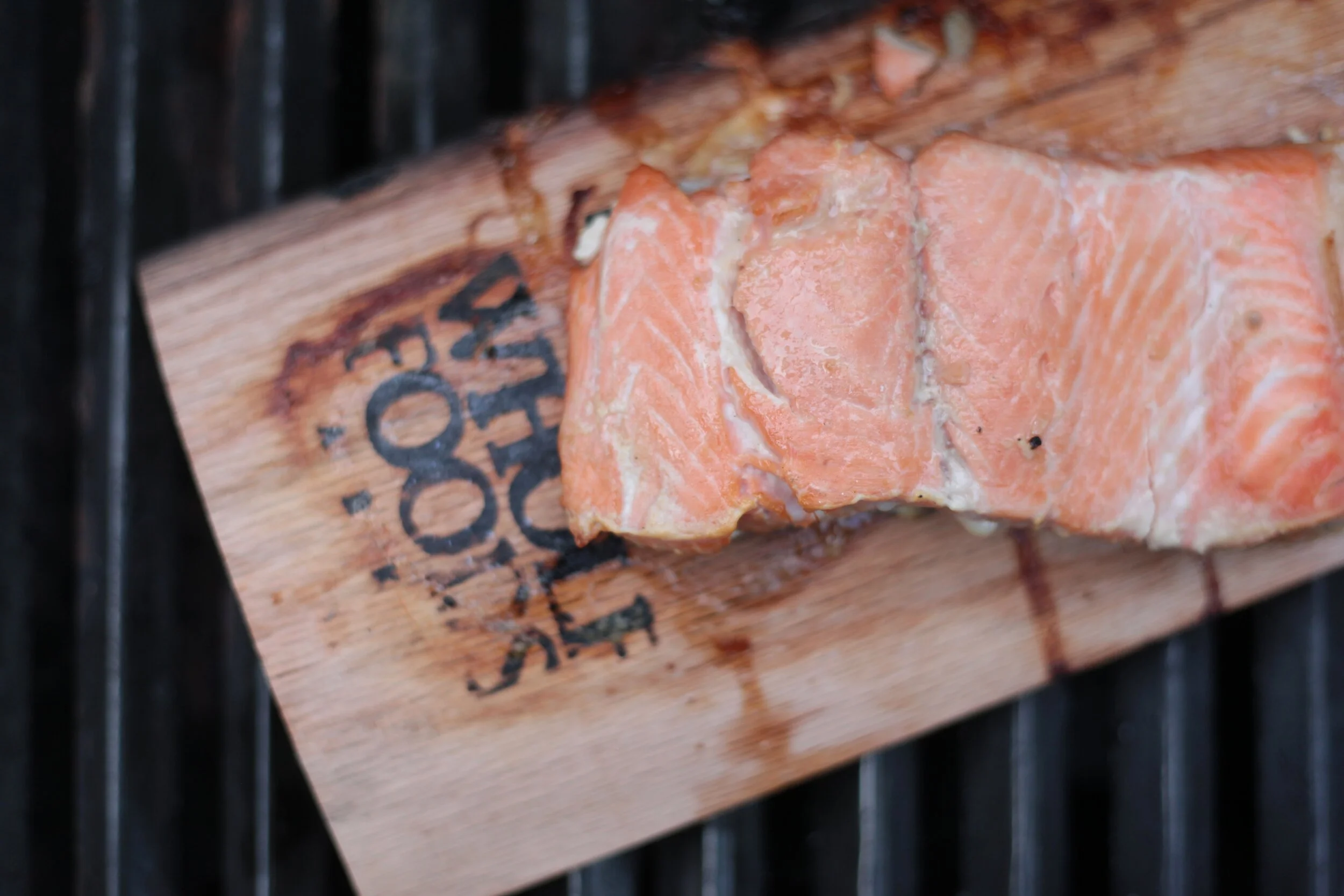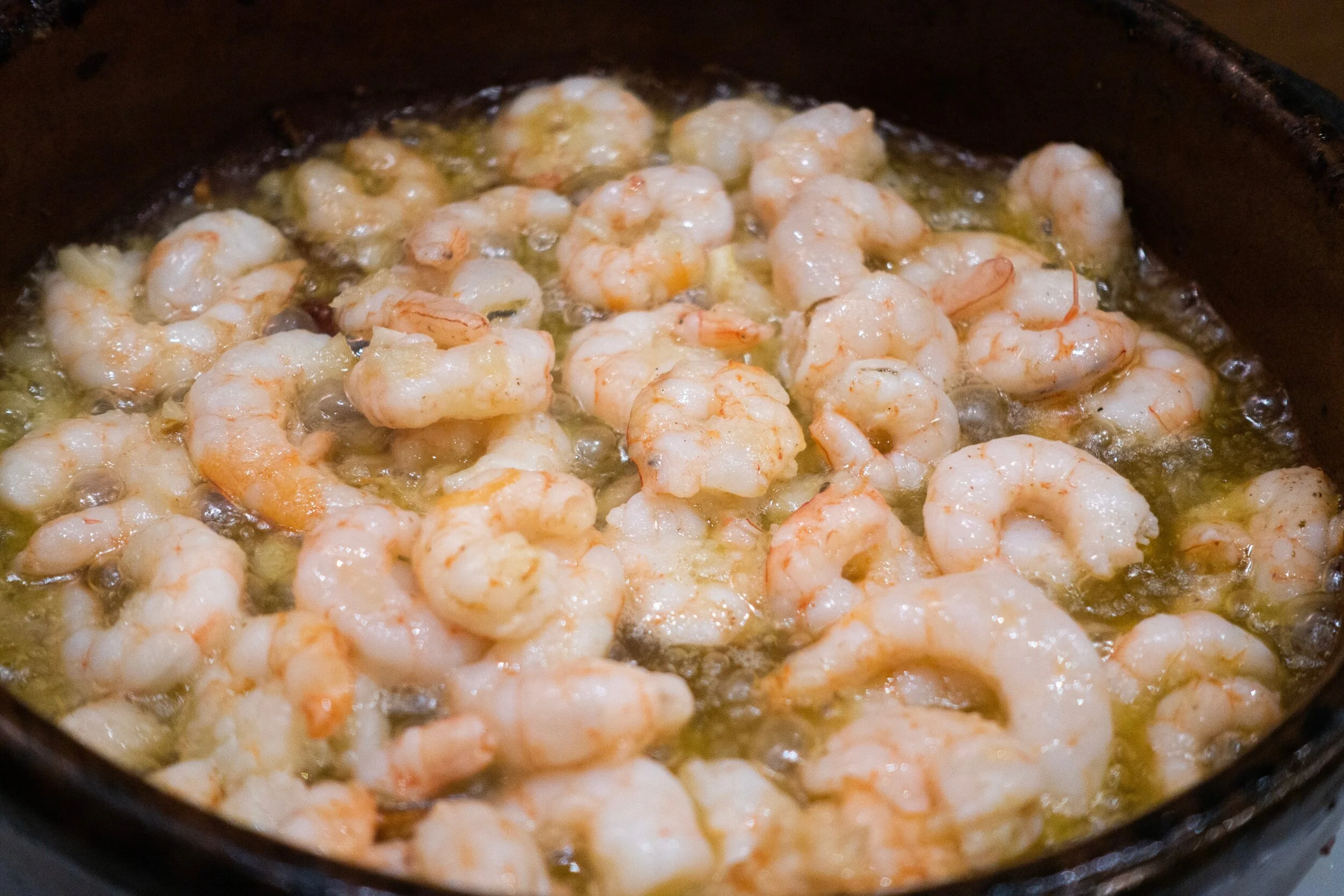What is the Best Fish For Your Baby (and Kids) - everything you need to know
Wondering what fish are best and safest for your baby? Fish are high on the allergenic food list, and it can understandably be a little bit scary introducing them to your baby for the first time. On top of that, there are questions about which fish are the safest and healthiest for our babies (and older kids for that matter).
Fish are high in omega-3 fats (awesome for brain development), and have decent amounts of protein for growing bodies. And while the levels of omega-3 and protein vary from fish to fish, it’s safe to say these 2 ingredients make seafood a healthy choice for the whole family.
Unfortunately, when it comes to environmental exposures, our fish are swimming in a lot of chemicals. And toxins are typically stored in fat (which fish are made of!). The way it works, is that small fish are eaten by medium fish, and medium fish are eaten by large fish. So the larger the fish, the more little fish they have eaten, and the more toxins they have stored in their flesh. Our children have immature detox systems, and less body weight than us adults. So when they eat a portion of fish the same size as us, they are being exposed to more toxins BY BODY WEIGHT.
It is a general rule of thumb that to avoid the high levels of heavy metals, pesticides and plastic byproducts found in seafood, it is best to stick to eating smaller fish. Let’s go through my favourite seafood choices for your baby and kids.
Healthier Fish Options for Babies and Kids
When making this list, I have tried to account for nutritional profile, contaminant load, and impact on the environment.
Salmon - Wild-caught, Alaskan Salmon (to be precise!)
Salmon is rich in healthy fats that support brain and body development. It is also a great source of protein, B vitamins, potassium and selenium.
Wild-caught salmon means it hasn’t been farmed. Atlantic salmon is mostly farmed.
Farmed fish tend to be fed grains to fatten them up, and are given antibiotics to kill any infections from being in such close quarters to so many other salmon. Some farmed salmon companies even add pink dye to their feed, to give the fish the same colour as wild-caught salmon!
Sardines
Sardines are low on the food chain, so they have low levels of environmental toxins. They’re also very high in omega-3 fatty acids!
When introducing sardines to your children, be sure to remove any bones or blend them into the sardine mix. There is benefit to eating their bones, however babies will not be able to chew or swallow them safely.
North Atlantic Mackerel
Wild-caught Mackerel is high in omega-3s and low in contaminants. It is a great alternative for canned tuna.
King mackerel and Spanish Mackerel need to be avoided, as they are high in mercury and other environmental contaminants.
As with the other fish that are safe for babies, North Atlantic Mackerel is high in omega-3s and protein, with some trace minerals such as selenium too (which is super important for brain health and detoxification).
All of these fish have been overfished in the past. Some companies are now working sustainably, however there are many that unfortunately are not. Sustainable fishing practices may cost you a little more, but they consider our ocean’s entire ecosystem as well as your baby’s health.
The maybe/occasional fish options for baby
Some advocates will suggest tuna and cod are also safe for babies and children. I personally avoid these options because there are healthier choices available to us (as above). However, the occasional wild-caught tuna or cod, in small doses, would be ok for your baby and children.
Introducing shrimp to your baby (called prawns in Australia!)
I’ve added shrimp into the mix here, though I wouldn’t recommend introducing until 12 months of age. While you can definitely give your baby shrimp after 6 months of age, it can be a funny texture for them to eat. It is slippery and tough to break down (especially without teeth!), and they pose a choking hazard.
To serve shrimp to a baby, you must slice very finely, or mince them into a meal. Do not give a whole shrimp to your baby until well after their first birthday (and even then, watch them carefully). I would recommend shrimp is cut into fine pieces for the first few years of your child’s life, to reduce the risk of choking.
All crustaceans are naturally high in sodium, which should be avoided where possible in the first few years of life. It’s best to give your baby small and irregular portions until they are 1 year old.
Shrimps and prawns are in the top allergen list and you should start with a small serving, before increasing the portions and frequency of exposure.
Serving fish to your baby
Ensure if you’re using fresh fish, you cook it all the way through
When purchasing canned fish, ensure you find low sodium, and BPA-free options
Rinsing will also reduce the sodium, if the fish has been preserved in a salt solution
If you have a family history of fish allergies, you may prefer to speak to your health professional before introducing any seafood to your baby
Start by serving a small amount (I recommend mixing with other familiar flavours such as avocado, mayonnaise, or mash sweet potato)
If your baby displays no signs of reaction, introduce fish on a regular basis
As with all foods, it is best to rotate exposures, creating small exposures to each fish over a period of time
It has been demonstrated that allergenic foods must be regularly given to babies to reduce their chance of allergies
Alaskan salmon, atlantic mackerel and sardines are not a high risk food for choking on, however please ensure bones have been removed
Fish to avoid for your baby
We’ve covered my most favourite fish to give your baby, but I want to touch on some fish to avoid. I’ve chosen this list because they’re common in Australian supermarkets and are relatively cheap.
You’ll notice a pattern with these worst fish for your baby. The biggest issue with seafood is the level of contamination in their water, and whether they were caught in their wild environment or farmed.
Larger fish that are higher up the food chain have many more contaminants in their body, which is ingested when we eat seafood. Our bodies must process those contaminants and expel them. While some adults have completely sufficient detoxification systems, our babies and children’s systems are much more immature. By body weight alone, they are exposed to more toxins than we are, and with such rapid cellular growth during childhood, there are many more moving parts (and more that can go wrong).
While these recommendations are focused on introducing seafood to your baby, they are relevant to older children and even adults as well.
Farmed Salmon
This might be labelled as Atlantic salmon, or Tasmanian Atlantic salmon.
These types of salmon are farmed off the coast of Tasmania, and raised in crowed pens, lending themselves to catch infections from each others faeces and parasites.
Unfortunately, these salmon are not fed ‘natural food’ for a salmon, and instead are fed a feed lot that fattens them up (similar to what we do to grain-fed beef), including antibiotics and pesticides to keep the infections at bay.
Farmed salmon tend to have higher omega-6 fatty acids, so the whole point of eating fish for their omega-3 fats is lost when you choose farmed.
Shark
Sharks are one of the biggest creatures in the sea, so they eat a LOT of other fish! Being high on the food chain means they are ingesting many more toxins and environmental pollutants than smaller fish. This is held in their fatty flesh, and (just like humans), remains in their fat for life.
For this reason alone, and our babies having immature detoxification systems, it is not advisable to be feeding our babies shark. In fact, shark is on my own personal list of “do not eat” - for adults and children alike.
When it comes to sustainability of the ocean, sharks do not procreate often, and they take a long time to mature. They are not a sensible choice for anyone wishing for sustainability.
Swordfish
Swordfish is a large fish, and as a result contains high levels of mercury (from ocean pollution).
Some recommend that swordfish is never given to women or children, and even men should not have it more than once a month. I say, everyone should avoid!
King Mackerel
Mackerel is certainly packed with healthy omega-3s. But when it comes to certain types of mackerel, the Food and Drug Administration warns women and children to outright avoid it. You should be avoiding King Mackerel and Spanish Mackerel due to their high levels of mercury.
As mentioned above, North Atlantic Mackerel is high in omega-3s and low in mercury, and is often sustainably farmed too.
Grouper
Grouper is on the list when it comes to fish you should never eat due to its moderately high mercury levels. This species is also highly vulnerable to overfishing.
Grouper is also the common target of seafood fraud. Testing found that “grouper” for sale is actually often king mackerel or whitefin weakfish, a cheaper alternative.












